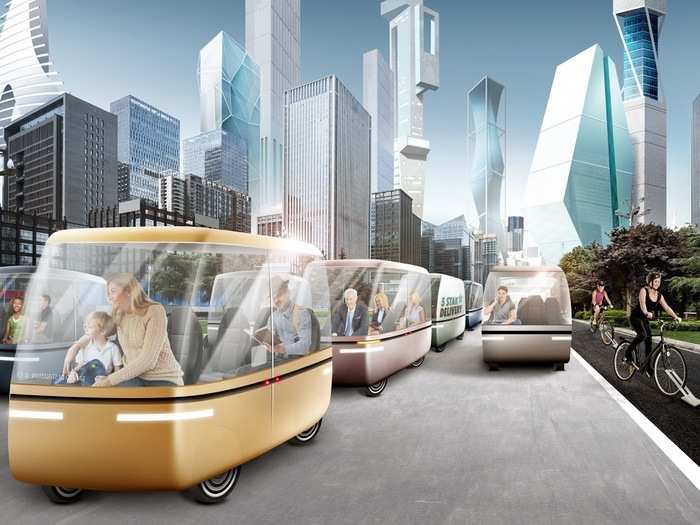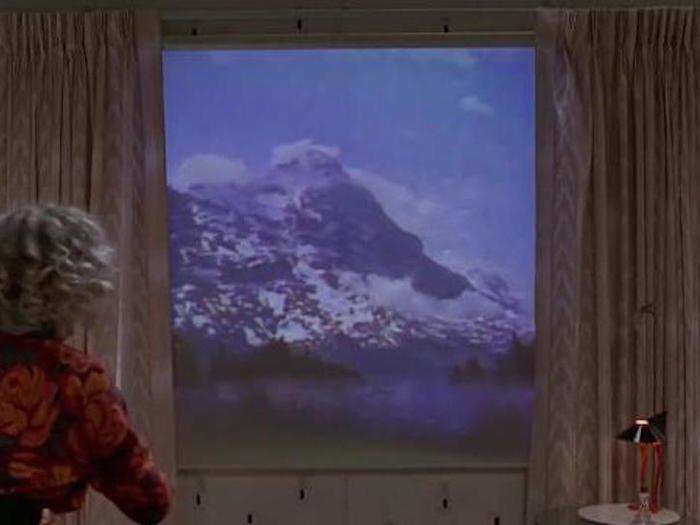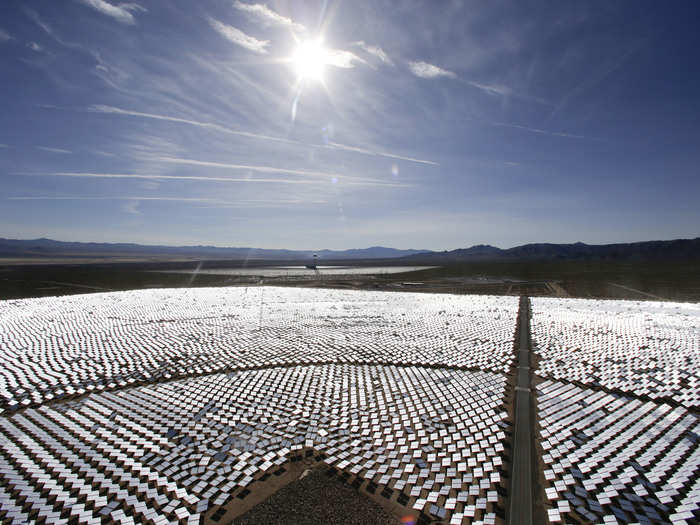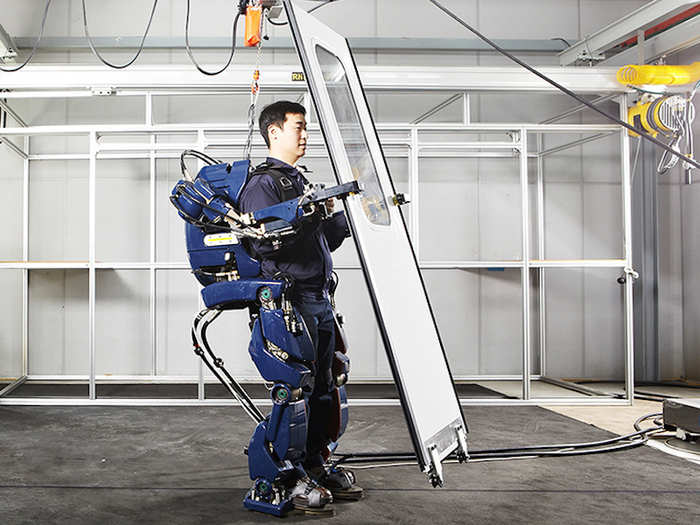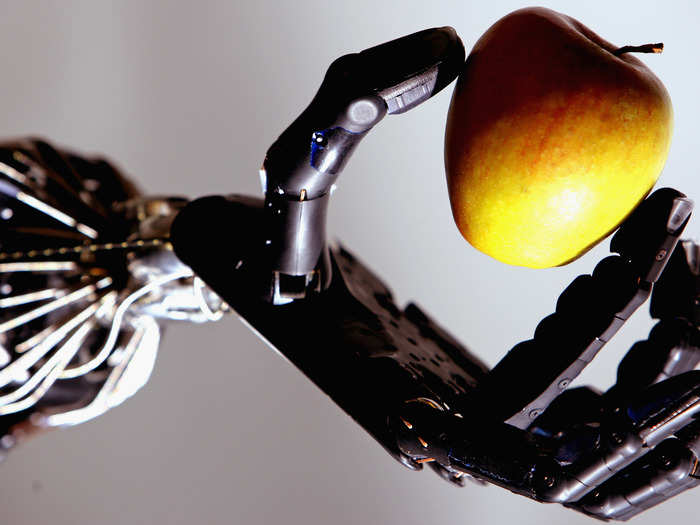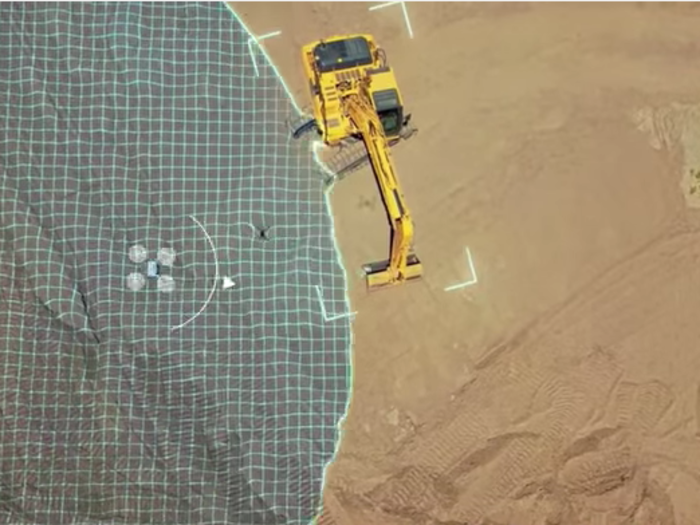Super tall buildings will function like mini cities.
With high-demand and high land costs, super tall buildings may be converted to house low and medium income workers. They will function like mini-cities with floors dedicated to working out, residential space, and office work.
Buildings' windows will be replaced by virtual reality screens.
In "Back to the Future II," Marty's future home was equipped with a virtual reality window that could be changed to any scene (pictured above). The report envisions a similar future where buildings don't have windows, but virtual reality screens.
"This could be a very cheap and fast way of constructing cheap residential accommodation," the report reads.
People can spray on special coatings that can collect solar energy.
The feasibility of solar coatings will depend on developments in nanotechnology to create nanoparticle-based material, but basically, the spray would be able to absorb and convert sunlight into energy.
Radiative heating and smart lighting will follow you as you walk around a room.
Heat and light and will be directed at you so you can walk around at whatever temperature you like with your desired light exposure.
The report doesn't go into detail about how exactly this technology would work, however, there is currently a lot of research and development underway to improve lighting.
For example, the Ario lamp—which was created based on research from NASA and Harvard—is a WiFi connected lamp that mimics the sun's natural light to help improve a user's health.
Construction workers will wear exoskeletons to carry heavy equipment.
We're actually already seeing this in the works. Panasonic is developing a robotic suit (pictured above) that makes it easier to lift and carry heavy objects.
And the Department of Defense is two years away from unleashing its Iron Man suit, which is capable of performing many feats including lifting heavy items with ease.
The report notes that construction workers will start using robotic suits once they are fully developed.
Dangerous construction jobs will be handled by robots.
The report notes that robots will work alongside humans on a series of projects, but can take over jobs that comes with high risk of explosion or collapse.
3D printing and robot assemblies will allow for rapid construction.
The report states that 3D printing for construction is likely to progress quickly as new forms of concrete and other materials are developed.

